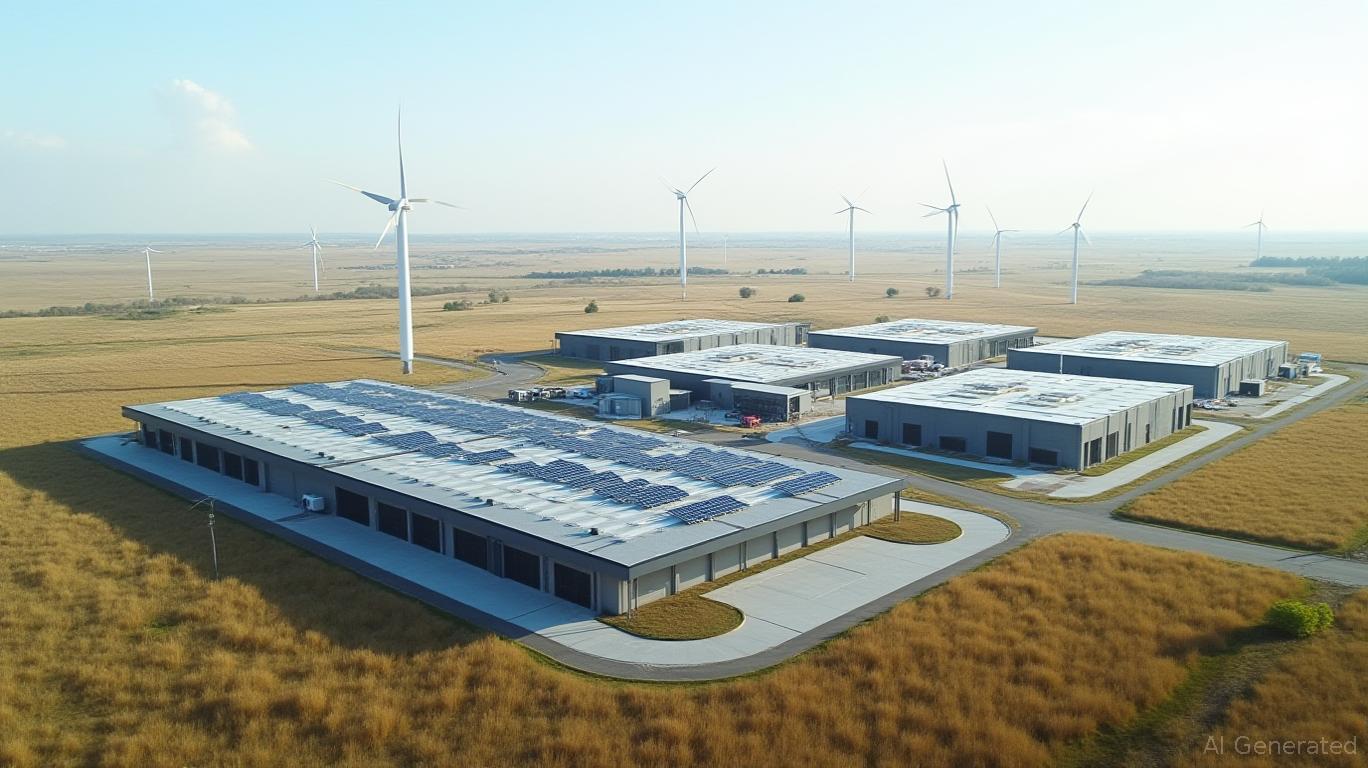ABB and Applied Digital: Pioneering the Future of AI Infrastructure with Medium Voltage Innovation
The global race to build AI-ready data centers has intensified, driven by the voracious power demands of advanced computing workloads. Amid this shift, ABB's strategic partnership with Applied Digital (APLD) to construct a 400 MW greenfield data center campus in North Dakota has emerged as a landmark project. This collaboration not only addresses critical bottlenecks in power density and energy efficiency but also sets a new standard for scalable, sustainable infrastructure. For investors, this partnership signals a seismic shift in how capital should be allocated to capture returns in the AI infrastructure boom.

The Power Problem in AI Infrastructure
Traditional data centers, reliant on low-voltage power architectures, face two existential challenges: power density limitations and energy inefficiency. High-power AI applications—such as training large language models or running generative AI workloads—demand massive computational resources, which in turn require denser power systems. Conventional setups, however, struggle to scale without adding excessive physical infrastructure, driving up costs and carbon footprints.
ABB's medium voltage UPS technology, the HiPerGuard, disrupts this paradigm. By operating at voltages up to 24 kV, it reduces conversion losses, minimizes heat generation, and shrinks the electrical plant footprint. This allows data centers to scale in 25 MW blocks with fewer components and cabling, slashing installation complexity and downtime risks. The Applied Digital campus, built using this architecture, exemplifies the solution: a 400 MW facility with 98% energy efficiency—achieved by cutting power losses and integrating renewable energy sources.
The North Dakota Blueprint: A Case for Scalability and Sustainability
The partnership's flagship project in North Dakota is a masterclass in AI infrastructure optimization. By replacing low-voltage systems with ABB's medium voltage UPS:
- Power density increases, enabling the campus to support hyper-intensive AI workloads in a compact footprint.
- Energy efficiency improves by reducing conversion losses, translating to a 53% drop in energy use compared to legacy systems (as seen in ABB's Lakeland Community College case).
- Sustainability is embedded through integration with battery storage and renewable energy, reducing carbon emissions by 1,245 tons over 15 years.
The project's design also prioritizes resilience: the HiPerGuard's patented Impedance Isolated Static Converter (ZISC) architecture ensures uninterrupted power, critical for AI systems that cannot afford downtime. Applied Digital's Todd Gale emphasizes this as a “new paradigm for electrical infrastructure,” positioning the campus as a template for future AI “factories.”
Market Dynamics: The AI Infrastructure Gold Rush
The data center UPS market is booming, with a projected 15.17% CAGR to reach $20.75 billion by 2030.
is a clear beneficiary of this trend, leveraging its early bets on medium voltage systems and lithium-ion battery integration. Meanwhile, Applied Digital's strategic focus on high-capacity, sustainable facilities aligns perfectly with hyperscalers' needs for low-cost, high-density compute hubs.
ABB's stock has outperformed the broader market, reflecting investor confidence in its innovation pipeline. Similarly, Applied Digital's early wins—like the North Dakota project—position it to capitalize on the AI infrastructure boom.
APLD's revenue trajectory since 2023 underscores the demand for scalable, energy-efficient data centers. As hyperscalers and enterprises invest in AI, companies like ABB and Applied Digital will be the primary beneficiaries.
The Investment Thesis: Why ABB and APLD Are Core Plays in AI Infrastructure
- ABB: The Enabler of Efficiency
- Technological Leadership: ABB's medium voltage UPS and ZISC architecture are unmatched in addressing power density and scalability.
- High Margins: Energy-efficient solutions command premium pricing, boosting profitability.
Global Reach: Deployments in North America, Europe, and Asia-Pacific (e.g., China's KCY Cloud Data Center) reduce regional risk.
Applied Digital: The Infrastructure Play
- Strategic Location: The North Dakota campus leverages cheap renewables and cooling resources, reducing operational costs.
- Scalability: The 25 MW modular design allows incremental capital investments, aligning with demand cycles.
- First-Mover Advantage: Early adoption of ABB's tech positions APLD as a go-to partner for hyperscalers building next-gen AI facilities.
Risks and Considerations
- Regulatory Hurdles: Stricter emissions standards could accelerate demand for ABB's solutions but may also delay project timelines.
- Competition: Rival UPS vendors (e.g., Eaton, Schneider Electric) may catch up with medium voltage offerings.
- Demand Volatility: Overbuilding AI infrastructure could lead to oversupply, though current compute demand suggests robust long-term growth.
Conclusion: Bet on the Infrastructure Fueling the AI Revolution
ABB and Applied Digital are not just building data centers—they're redefining the economics of AI. By solving power density and efficiency challenges, they enable hyperscalers to scale compute at lower costs, higher reliability, and reduced environmental impact. For investors, this partnership is a two-pronged opportunity:
- Buy ABB for its irreplaceable tech leadership in medium voltage systems.
- Buy APLD to capitalize on its strategic infrastructure bets in prime AI markets.
As the AI infrastructure boom accelerates, these companies will be the bedrock of a new era of compute-driven innovation. The question isn't whether to invest—it's how soon you can act.
This article is for informational purposes only. Investors should conduct their own due diligence before making decisions.

Comments
No comments yet